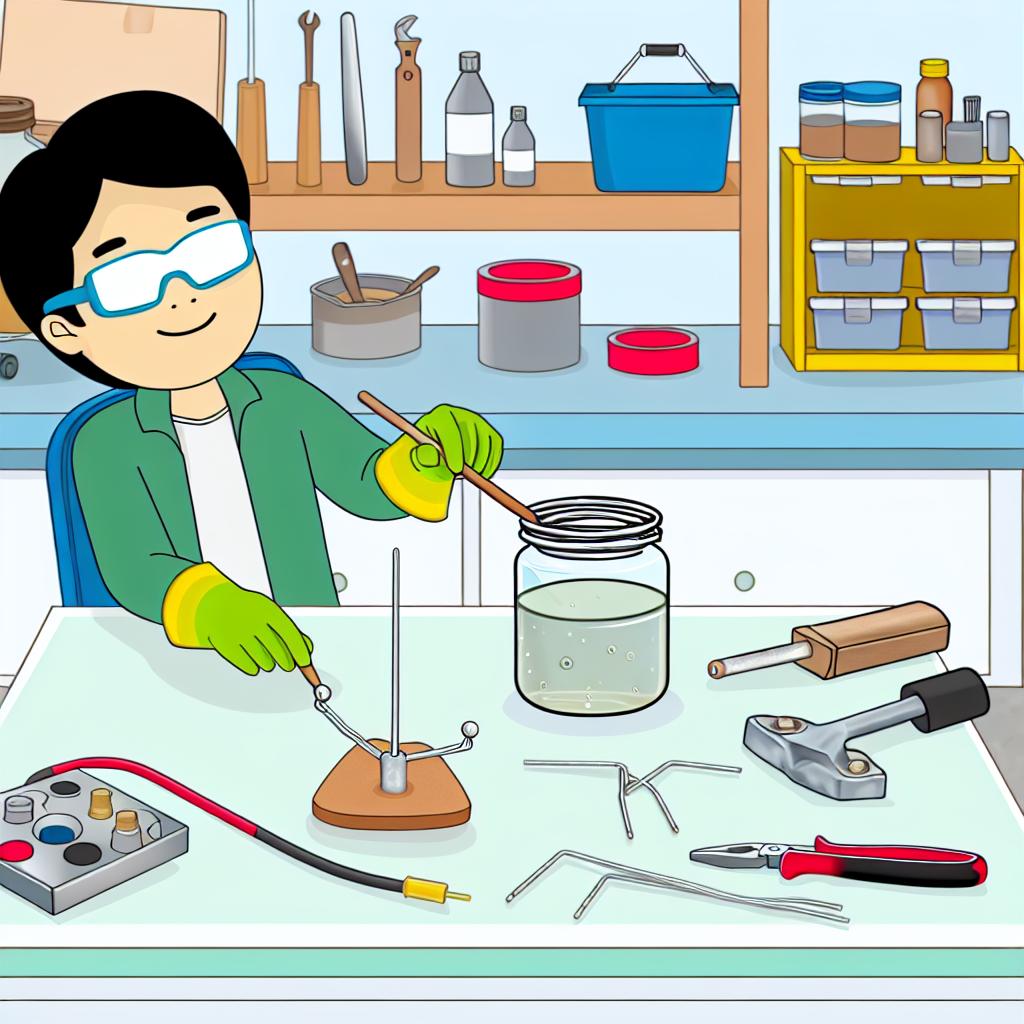DIY Electroplating at Home: A Complete Guide
Are you fascinated by the idea of giving your old tools a new shine, or adding a metallic touch to your DIY crafts? Electroplating can be a fantastic home DIY project for anyone willing to explore the world of metal finishing. This guide will walk you through the entire process of DIY electroplating at home, ensuring you understand the materials, tools needed, safety precautions, and step-by-step procedures.
Materials & Tools
Before diving into the electroplating process, let’s gather all the necessary materials and tools. Having everything ready will make the process smooth and enjoyable.
Materials
- Electrolyte solution (depending on the metal you want to plate)
- Metal object to be plated
- Metal anode (same type of metal as the electrolyte)
- Conductive wire
- Distilled water
- Household vinegar
- Baking soda
- Rubbing alcohol
Tools
- DC power supply or batteries
- Plastic or glass container
- Protective gloves
- Safety glasses
- Measuring cups
- Sandpaper or steel wool
Safety Precautions
While electroplating at home can be a fun project, it’s crucial to prioritize safety. Here are some key safety measures:
- Always wear protective gloves and safety glasses to prevent any contact with harmful chemicals.
- Work in a well-ventilated area to ensure that you are not inhaling any harmful fumes.
- Keep all chemicals and electrical components away from children and pets.
- Always follow the manufacturer’s instructions on handling chemicals and setting up the power supply.
Step-by-Step Process
Follow these detailed steps to achieve a successful DIY electroplating project:
Step 1: Clean the Object
Start by thoroughly cleaning the metal object you plan to plate. This helps in removing any dirt, grease, or rust that can hinder the electroplating process. Use sandpaper or steel wool to scrub off any rust or tarnish. Then, wash it with household vinegar and baking soda, and rinse with distilled water. Finally, wipe it down with rubbing alcohol for a clean, residue-free surface.
Step 2: Prepare the Electrolyte Solution
The electrolyte solution varies depending on the type of metal you are plating. Here are common solutions for different metals:
- Copper: Mix one part copper sulfate with five parts distilled water.
- Nickel: Mix one part nickel sulfate with eight parts distilled water.
- Gold: Use a gold plating solution available in DIY kits.
Ensure you follow the appropriate measurements and mix well. Pour the solution into the plastic or glass container.
Step 3: Set Up the Electroplating Circuit
Position the metal object (cathode) and the metal anode (same type of metal as the electrolyte) properly:
- Attach a conductive wire to the metal object. Connect the other end to the negative terminal of the DC power supply or battery.
- Attach another wire to the metal anode and connect it to the positive terminal of the DC power supply or battery.
- Submerge both the metal object and the anode into the electrolyte solution, ensuring they don’t touch each other.
Step 4: Start the Electroplating Process
Switch on the DC power supply or battery and set the voltage according to the metal you are plating:
- Copper: 3-6 volts
- Nickel: 5-7 volts
- Gold: 3-5 volts
The electroplating process can take anywhere from a few minutes to several hours, depending on the object’s size and desired plating thickness. Regularly check the progress and ensure the object is consistently submerged.
Step 5: Rinse and Polish
Once you are satisfied with the plating, turn off the power supply and carefully remove the metal object from the solution. Rinse it thoroughly with distilled water to remove any electrolyte residue. Finally, polish it with a soft cloth to bring out the shine.
Before & After Examples
Here are some before and after examples to illustrate the transformation that electroplating can bring to your DIY projects:
Example 1: Old Keys
Before: An old, rusty key.

After: A shiny, copper-plated key.

Example 2: Worn-out Jewelry
Before: A tarnished silver ring.

After: A bright, gold-plated ring.

Example 3: Decorative DIY Crafts
Before: A plain metal craft piece.

After: An eye-catching, nickel-plated craft piece.

Conclusion
DIY electroplating can be a rewarding and engaging project that offers endless possibilities for home décor and small DIY projects. With the right materials, tools, and safety precautions, you can transform mundane items into stunning pieces that add character and charm to your home.
Looking for more DIY project ideas? Check out our other articles like Cardboard Crafts for Home Décor, DIY Smart Home on a Budget, and How to Make Homemade Slime for Kids.
For seasonal inspiration, don’t miss our DIY Fall Décor Ideas to Cozy Up Your Home, and if you encounter any sticky messes during your projects, learn how to create a Homemade Goo Gone DIY Solution.
Happy DIYing!


